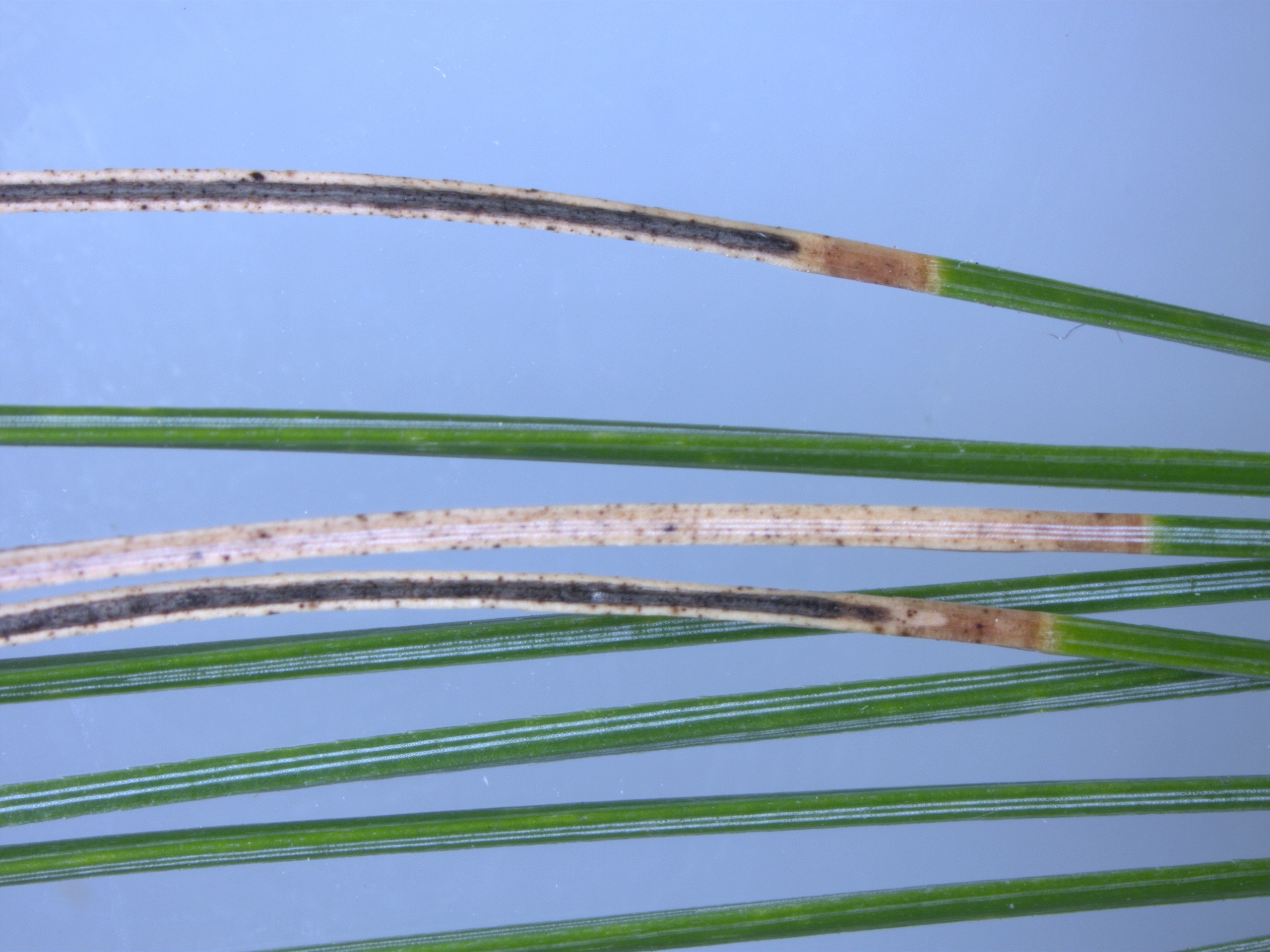By Linda Williams, DNR Forest Health Specialist, Woodruff, Linda.Williams@wisconsin.gov or 920-360-0665
Scattered white pine in Oneida and Vilas counties had significant amounts of needles that turned light tan or pale yellow this spring. Those needles have mostly dropped from trees, leaving them quite thin.
Lophodermium (a fungi) was recently identified on needle samples from these trees. There were also long, linear fruiting structures on the needle samples, similar to Lophophacidium (Dooks needleblight), but tests were negative for that fungus. Lab tests continue to investigate if additional fungal diseases are present in the needles.

Black, linear fruiting bodies on some needles indicate disease. Testing continues. Photo: Wisconsin DNR
The affected trees seemed to break bud without issue this spring, and needles have been expanding normally. No treatment is necessary for these trees, as the damage is already done. Infection seems to be tied to cool, wet weather in the fall. Pruning lower branches to increase air flow can help to reduce some of the infection.

